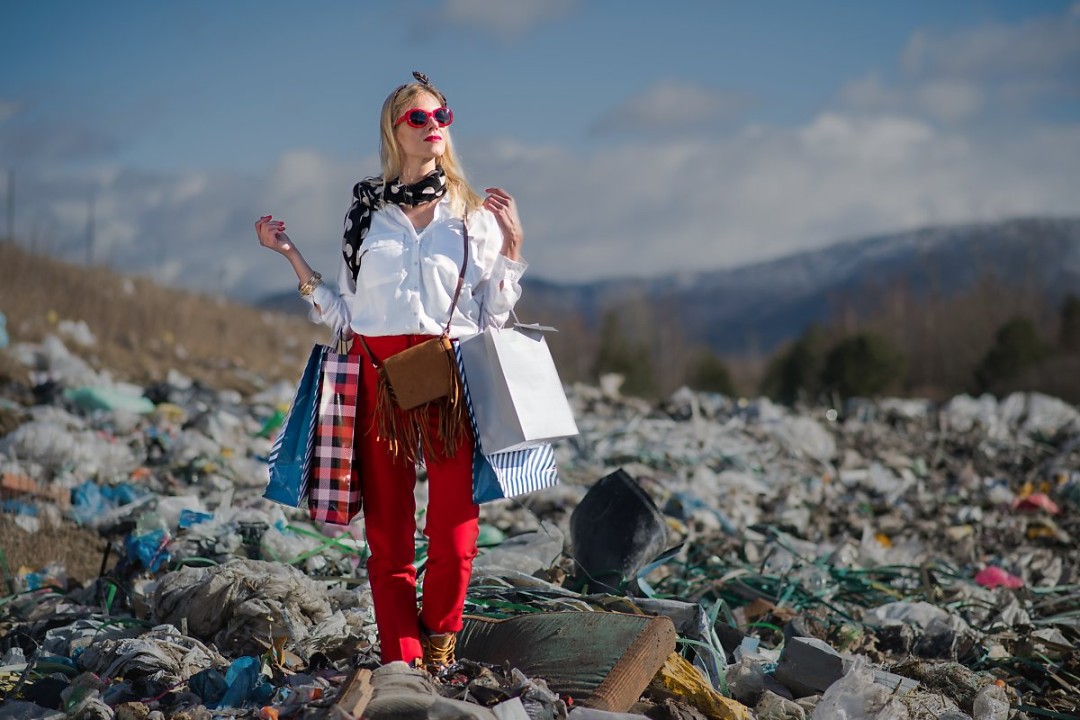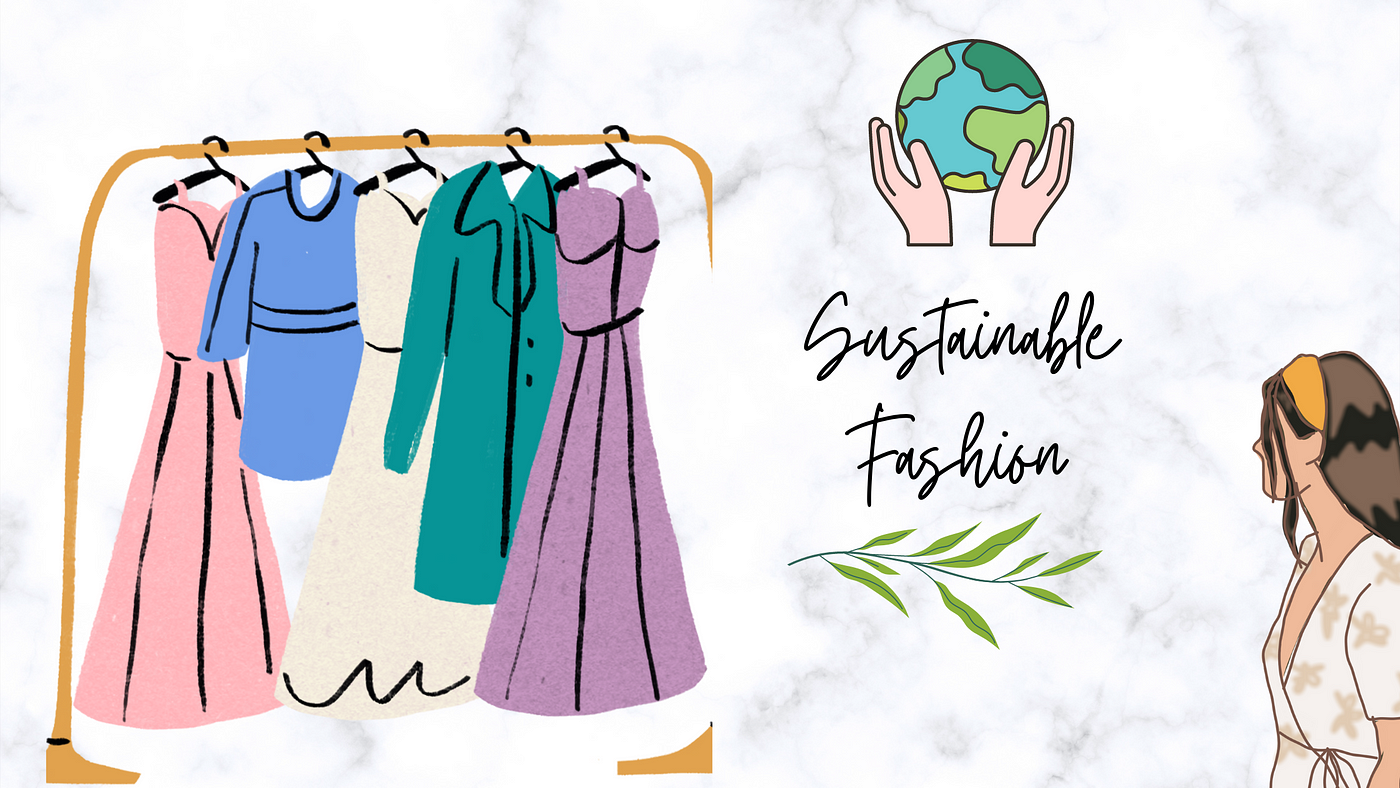Fashion is a constantly evolving industry whose influence is not just limited to our wardrobe choices, but also extends to global trends and consumer behavior. In recent years, the fashion industry has gone through a significant transformation, with the emergence of two different concepts: fast fashion and slow fashion. Fast fashion promotes speed and price, whereas slow fashion promotes sustainability, ethical production, and conscious consumption. Let’s take a look at the social and environmental impacts of these two contrasting approaches to fashion.
Fast Fashion
Consumer demand for the latest trends at inexpensive rates drives the fast fashion industry, which runs on a rapid production and turnover system. This strategy depends on shorter supply chains, outsourcing manufacturing to nations with cheaper labor costs, and utilizing economies of scale to produce large quantities of clothing at a low cost. As a result, new collections hit the stores every few weeks, enticing customers to keep their wardrobes up to date with the current trends. However, the pursuit of speed in fast fashion has serious environmental and social consequences. From an environmental point of view, the fast fashion sector is one of the major contributors to pollution and resource depletion. The Dyeing and finishing techniques used to color garments contribute to water pollution since untreated wastewater containing harmful chemicals is frequently released into rivers and waterways.
The disposable nature of fast fashion promotes overconsumption and waste. Clothing items are intended to be worn only a few times before being discarded, resulting in the accumulation of textile waste in landfills. This throwaway mentality not only depletes natural resources but also feeds a vicious cycle of environmental degradation and inequalities in society. On the social front, the fast fashion business is known for its use of cheap labor and terrible working conditions in textile mills. Workers, mostly women from marginalized communities in developing nations, are frequently paid poverty rates, forced to work excessive hours, and denied fundamental rights like healthcare and education.
Many past events have raised global awareness of the human cost of fast fashion and highlighted the industry’s urgent need for reform. So, while fast fashion provides customers with price and accessibility, its persistent search for speed and profit has a notable environmental and social impact. Addressing the environmental and social consequences of fast fashion requires a collective effort among all stakeholders, including consumers, companies, governments, and industry organizations.
Slow Fashion
In contrast to the rapid, mass-produced clothes of fast fashion, slow fashion promotes a careful and sustainable approach to clothing production and consumption. Quality, artistry, and durability are emphasized over quantity, speed, and disposability. Rather than chasing fleeting trends, consumers are urged to invest in timeless pieces crafted with care, manufactured ethically, and designed to withstand the test of time. Eco-friendly materials and production methods are preferred to reduce the impact on the environment. This includes purchasing organic and natural fibers, such as organic cotton and linen, and lowering the carbon footprint of clothing manufacturing. Local manufacturing and small-scale production are also promoted to reduce transportation emissions and support communities. The aim is to alleviate the environmental damage caused by the fashion industry by implementing sustainable methods throughout the supply chain.
Slow fashion focuses on transparency and ethical production. Brands are committed to fair labor standards, which include paying workers a livable wage, providing safe working conditions, and granting fundamental rights and benefits. They strive to address systematic inequality and exploitation in the garment industry by focusing on the worker’s well-being, empowering workers, and encouraging social justice. A more thoughtful and deliberate attitude to consuming is encouraged. Fast fashion’s culture of overconsumption and disposable clothing is challenged by urging consumers to invest in fewer, higher-quality pieces. This transition to conscious consumption not only decreases waste and environmental impact but also fosters consciousness and appreciation for clothing’s value. By embracing principles of sustainability, transparency, durability, and mindfulness, Slow Fashion seeks to create a more equitable, environmentally friendly, and socially responsible fashion industry.
Conclusion
In conclusion, the path to a more sustainable and ethical fashion industry begins with consumers making educated choices. One of the most effective measures is for individuals to educate themselves about the environmental and social effects of their clothing choices. Understanding the true cost of fast fashion and the benefits of supporting slow fashion allows consumers to make informed decisions that align with their beliefs and promote positive change. By making informed choices, supporting ethical brands, extending the lifespan of clothing, and advocating for change, consumers can play an important role in shaping a more sustainable and ethical fashion industry. They have the power to create a future where fashion is not only stylish and accessible but also environmentally responsible and socially equitable.



























